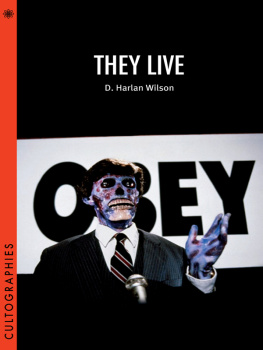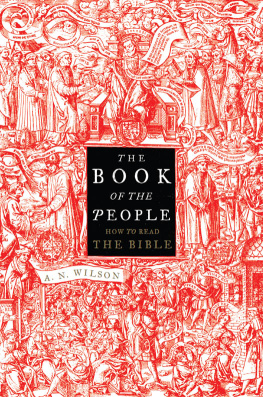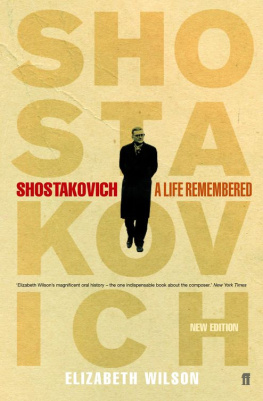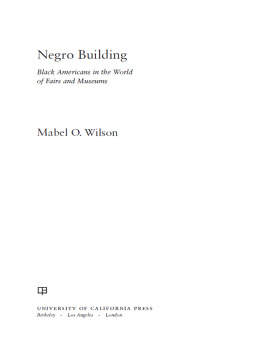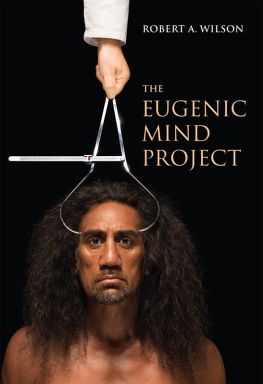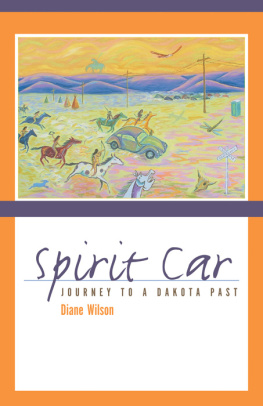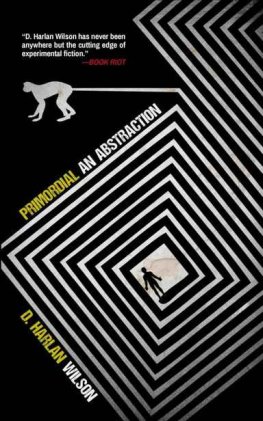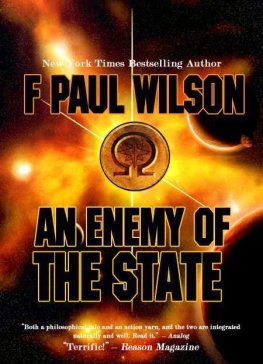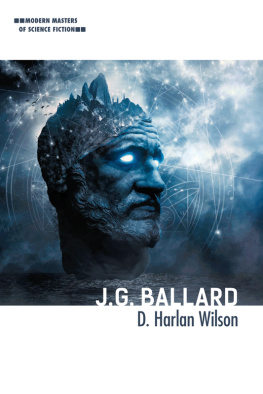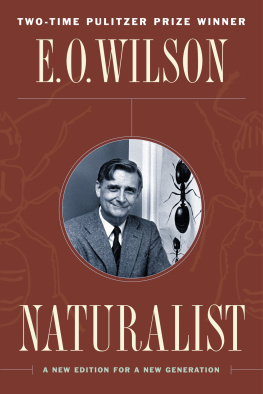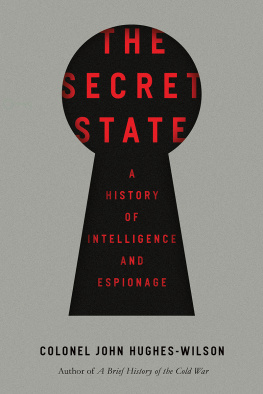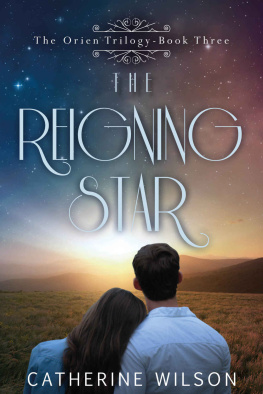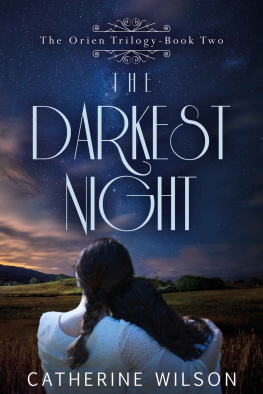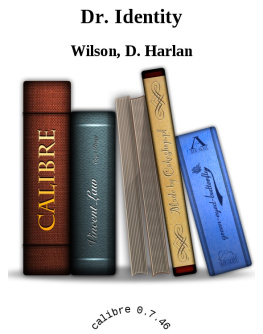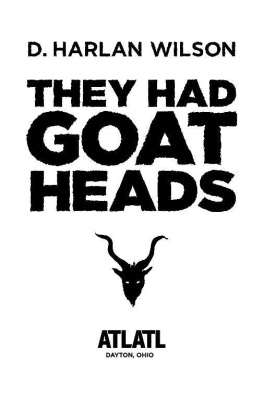CULTOGRAPHIES
THEY LIVE
D. Harlan Wilson
CULTOGRAPHIES is a new list of individual studies devoted to the analysis of cult film. The series provides a comprehensive introduction to those films which have attained the coveted status of a cult classic, focusing on their particular appeal, the ways in which they have been conceived, constructed and received, and their place in the broader popular cultural landscape.
For more information, please visit www.cultographies.com
Series editors: Ernest Mathijs (University of British Columbia) and Jamie Sexton (Northumbria University)
OTHER PUBLISHED TITLES IN THE CULTOGRAPHIES SERIES
THE ROCKY HORROR PICTURE SHOW
Jeffrey Weinstock
DONNIE DARKO
Geoff King
THIS IS SPINAL TAP
Ethan de Seife
SUPERSTAR: THE KAREN CARPENTER STORY
Glyn Davis
BRING ME THE HEAD OF ALFREDO GARCIA
Ian Cooper
THE EVIL DEAD
Kate Egan
BLADE RUNNER
Matt Hills
BAD TASTE
Jim Barratt
QUADROPHENIA
Stephen Glynn
FASTER, PUSSYCAT! KILL! KILL!
Dean DeFino
FRANKENSTEIN
Robert Horton
A Wallflower Book
Published by Columbia University Press Publishers Since 1893 New York Chichester, West Sussex cup.columbia.edu
Copyright Columbia University Press 2015
All rights reserved.
E-ISBN 978-0-231-85074-2
A complete CIP record is available from the Library of Congress
ISBN 978-0-231-17211-0 (pbk. : alk. paper)
ISBN 978-0-231-85074-2 (e-book)
Book design by Elsa Mathern
Cover image: They Live (1988) Universal
A Columbia University Press E-book.
CUP would be pleased to hear about your reading experience with this e-book at .
CONTENTS
This book emerged from a place of primal fear and genuine wonder; I will always be grateful to the editors of the Cultographies series for giving me the opportunity to write it. I am also grateful to Wright State University-Lake Campus for the sabbatical from teaching that allowed me to perform the majority of my research. I want to thank my wife, too, for putting up with my antics and, as always, being my first and best reader.
For my daughters Maddie and Renee
Two one-liners leap to attention like divining rods:
[1] I have come here to chew bubblegum and kick ass and Im all out of bubblegum.
[2] Lifes a bitch and shes back in heat.
Most twenty-first-century American teenagers probably dont know where these words come from, who speaks them, or what they mean. The source may even elude their parents. But something familiar a sense of comic irony, a shiver of existential dread echoes down the hallways of memory. In the real world, dj vu is the limit. In They Live, the one-liners possess a special valence, signifying the alpha male pathology of the protagonist who utters them, Nada, as well as the alienating (and alien-infested) world he struggles to negotiate and disempower.
Likewise do the one-liners resonate on a meta-narrational level. Nada is played by former professional wrestling superstar Roderick Toombs, better known as Rowdy Roddy Piper. At the time of They Lives release in 1988, he had reached the apex of a profitable career. Developments in cable television, pay-per-view, and the promotional efforts of media moguls Ted Turner and Vince McMahon had established professional wrestling as one of the most lucrative entertainment industries. In this pretend-battle sport, there are heroes, villains and characters who oscillate between moralistic poles. While he had moments of likability, Piper was almost always bad; racist, misogynistic, smart-mouthed and demented, his assholery seemed to have no boundaries. His role as Nada is comparatively tame to his role as professional wrestler, but the latter inevitably informs the former, and as the film progresses, we witness a distinct transformation in Nada from mild-mannered, lower-class, conformist American patriot to volatile, classless, individualistic American anarchist.
This transformation evokes Gilles Deleuze and Flix Guattaris concept of the becoming-animal, a complex process whereby one experiences a pathological metamorphosis, for better or for worse, sprouting the wings of angels or the fangs of werewolves and vampires; whatever the case, the process vies for agency. In Kafka: Towards Minor Literature, Deleuze and Guattari write: The becoming-animal effectively shows a way out, traces a line of escape, but is incapable of following it or making its own (1986: 367). Many of Kafkas stories feature characters who change from humans into animals as a means of escape from oppressive patriarchal forces; the evolving physical body claws for a desired terminal identity. Nada experiences a similar crisis. Throughout They Live, he bears the cross of the becoming-animal, which is to say, of the becoming-Piper, a burden that culminates in his death as he shows a way out, traces a line of escape for humanity. But it is through the act of becoming-Piper that the aforementioned one-liners exhibit a deeper resonance. To become Piper is to become violent, to become sexist and hypermasculine to become an American hero
Of course, as a teenager growing up in 1980s Midwest America, idle theorisations escaped me. I thought Roddy Piper was cool. He had a cockiness and flair for mockery that my friends and I aspired to emulate. Our relationship was to some degree contingent upon the dynamism with which we ridiculed one another, as is often the case among teenage boys jockeying to establish a (masculine) sense of self. Piper served as a fine model. Other wrestlers came to prominence in the 1980s Hulk Hogan, Ricky the Dragon Steamboat, Jake the Snake Roberts, the Honky Tonk Man, Randy the Macho Man Savage, the Iron Sheik, Andre the Giant, Big John Studd, King Kong Bundy and Jimmy Superfly Snuka, all of whom flaunted their own signature moves and personality traits. But none of them commanded our attention like Piper.
As with teenage boys, professional wrestlers assert identity by way of derision, and the sharper and wittier the derision, the better. Nobody could contend with Piper. At a height of 62 and an average weight of 180 lbs. in his early career (see Slagle 2000), he was smaller than most of his peers; linguistically, however, he towered in the sky like a mountain god. And he fought dirty. We liked that. We knew wrestling was fake physically gruelling, but rehearsed and performative and we knew wrestlers were actors. But that didnt stop us from losing ourselves in the drama of their counterfeit lives.
Pipers appearance in They Live only stoked my affection. The film was directed by one of my favourite filmmakers, John Carpenter, whose body of work consistently frightened and intrigued me from a young age. I saw my first Carpenter film in 1982 on my eleventh birthday. After enduring two months of whining and pleading, my mother finally broke down and took me to my first R-rated feature, The Thing. I had never seen anything like it. The flailing tentacles, the buckets of blood, the boiling flesh, a pectoralis dentata that chomps off somebodys hands, a melted-off head that sprouts hideous insect legs it fed my imagination to my detriment and benefit. In the years that followed, I became an ardent devotee of Carpenter, repeatedly devouring his movies at the theatre and on videocassette. Horror and science fiction movies like


